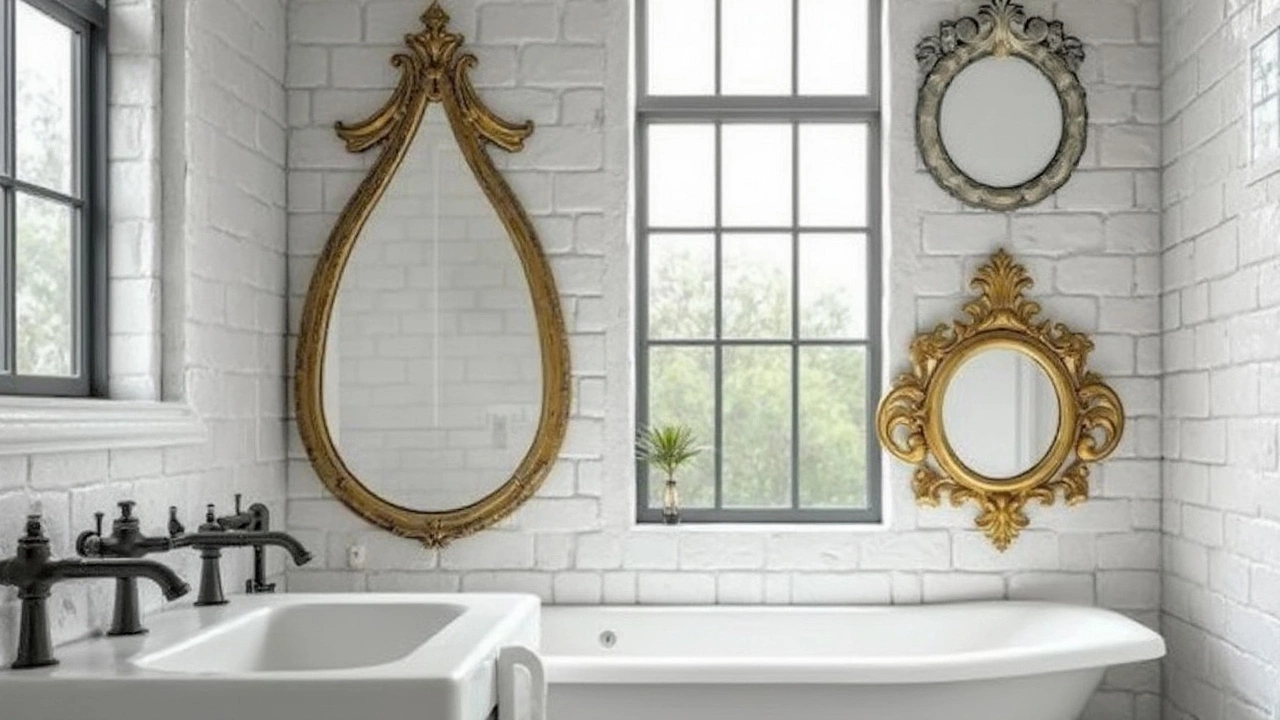Quality Mirrors: Choosing, Using and Caring for the Best Reflective Surfaces
If you’re hunting for a mirror that actually looks good and lasts, you’ve come to the right place. A quality mirror does more than just show your face – it brightens a room, makes spaces feel larger, and can even affect your mood. Let’s break down what to look for, how to install it right, and how to keep it sparkling.
What Makes a Mirror Quality?
First off, the glass matters. Real quality mirrors use a solid glass pane with a silver‑back coating that’s protected by a durable paint layer. Cheap mirrors often have thin glass and a flimsy film that chips or fogs up quickly. Look for specifications like “5 mm thick” or “double‑sided coating” – those clues point to sturdier construction.
Next, check the frame. A well‑made frame isn’t just about style; it supports the glass and prevents warping. Hardwood, powder‑coated metal, or sturdy composite frames are solid choices. Avoid frames that feel lightweight or have visible cracks.
Types of Mirrors and When to Use Them
Flat mirrors are the everyday workhorse – perfect for bathrooms, dressing rooms, or any spot where you need an undistorted view. Concave mirrors curve inward and can make you look taller; they’re great for makeup stations or boutiques.
Convex mirrors bulge outward, giving a wider field of view. Think safety mirrors in hallways, garages, or retail aisles where you want to see around corners. Each type serves a purpose, so match the shape to the room’s needs.
Black mirrors, the ones with a dark tinted surface, are popular for mood lighting or modern décor. They’re not just aesthetic – the tint reduces glare and can hide imperfections in the glass. If you love a sleek, almost invisible look, a black mirror might be your go‑to.
Now that you know the basics, here’s how to spot a mirror that will stand the test of time.
Spotting cheap mirrors: If the edge feels rough or the surface has bubbles, it’s a red flag. Hold the mirror up to light; a high‑quality piece will reflect evenly without streaks. Also, ask the seller about the coating process. Mirrors that say “optical grade” or “professional grade” usually have tighter quality control.
Installation tips: Use proper mounting hardware – toggle bolts for drywall, anchors for plaster. Measure twice, drill once. For large mirrors, enlist a friend; the weight can twist the frame if you try to lift it alone. Adding a thin silicone bead around the back can help absorb vibrations and reduce noise.
Cleaning and maintenance: Skip the abrasive cleaners. A mix of warm water and a few drops of dish soap does the trick. Spray onto a soft microfiber cloth, not directly on the glass, to avoid streaks. For tough spots, a dab of white vinegar works wonders, but rinse with plain water afterward.
Mirror safety is another angle many ignore. If you have kids, choose a safety‑backed mirror that shatters into tiny, harmless pieces instead of shards. For bathroom mirrors exposed to steam, pick a moisture‑resistant coating to prevent fogging.
Myths? Some say “the larger the mirror, the worse the reflection.” Not true – as long as the glass is thick and the coating is even, size doesn’t affect clarity. What matters is proper mounting and a clean surface.
Where to buy? Look for reputable home‑improvement stores or specialty glass shops that let you see the mirror in person. Online retailers can be good too, but read reviews about shipping damage and return policies.
Quick checklist before you checkout:
- Glass thickness ≥ 4 mm, preferably 5 mm.
- Solid backing (silver or aluminum coating) with protective paint.
- Sturdy frame material that matches your décor.
- Appropriate mirror type for the room’s function.
- Safety features if children or heavy use are expected.
Follow these tips, and you’ll end up with a mirror that not only looks great but also lasts for years. Happy shopping!
Trying to figure out what counts as a 'good quality' mirror and how much to budget for? This article breaks down the real prices, from bathroom staples to fancy statement pieces. You'll get clear tips on choosing the right mirror for both your needs and wallet. Plus, learn why price tags can vary so much and what small details actually make a big difference. Perfect for anyone shopping for a new mirror or just curious about what you're really paying for.
Jun, 15 2025
